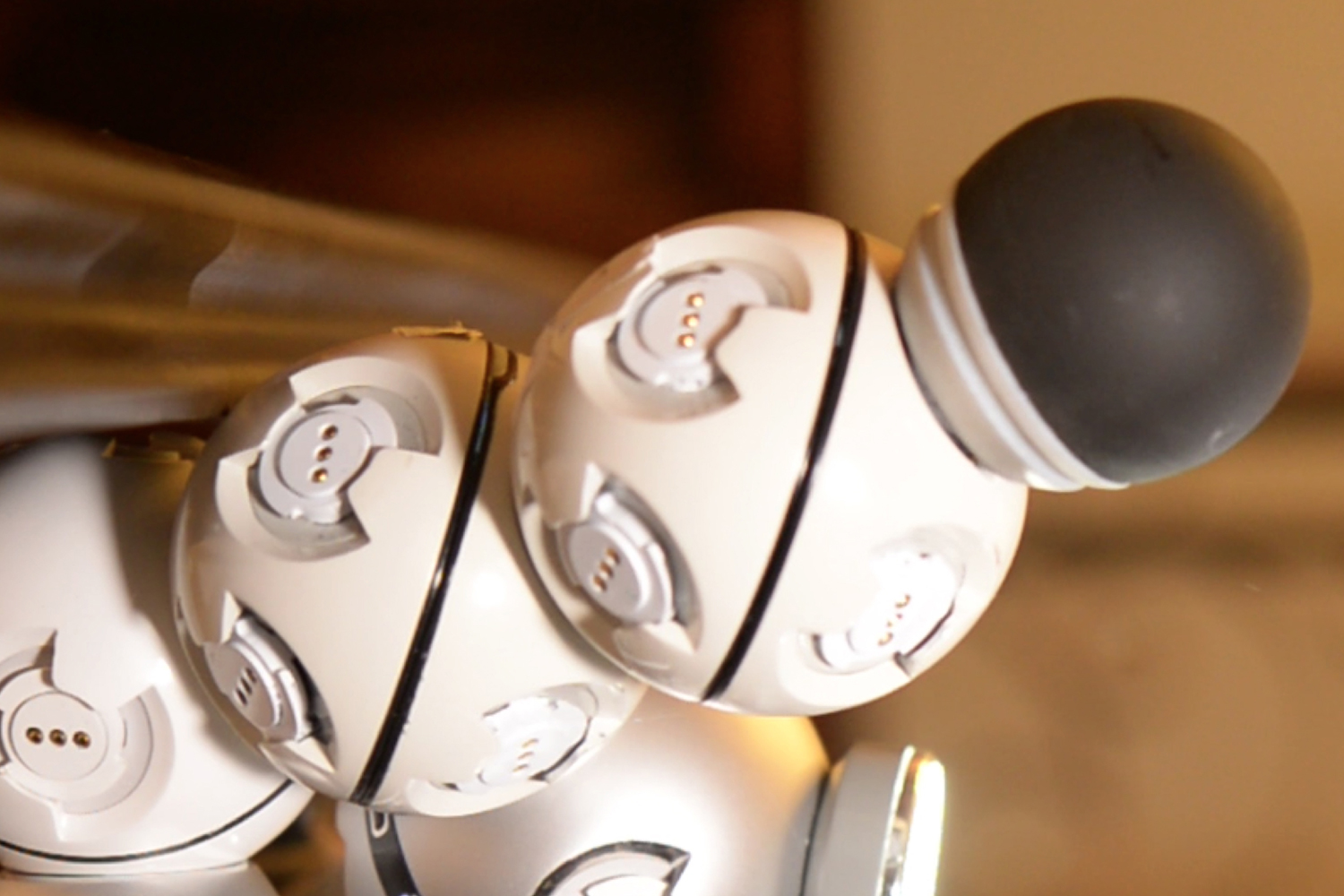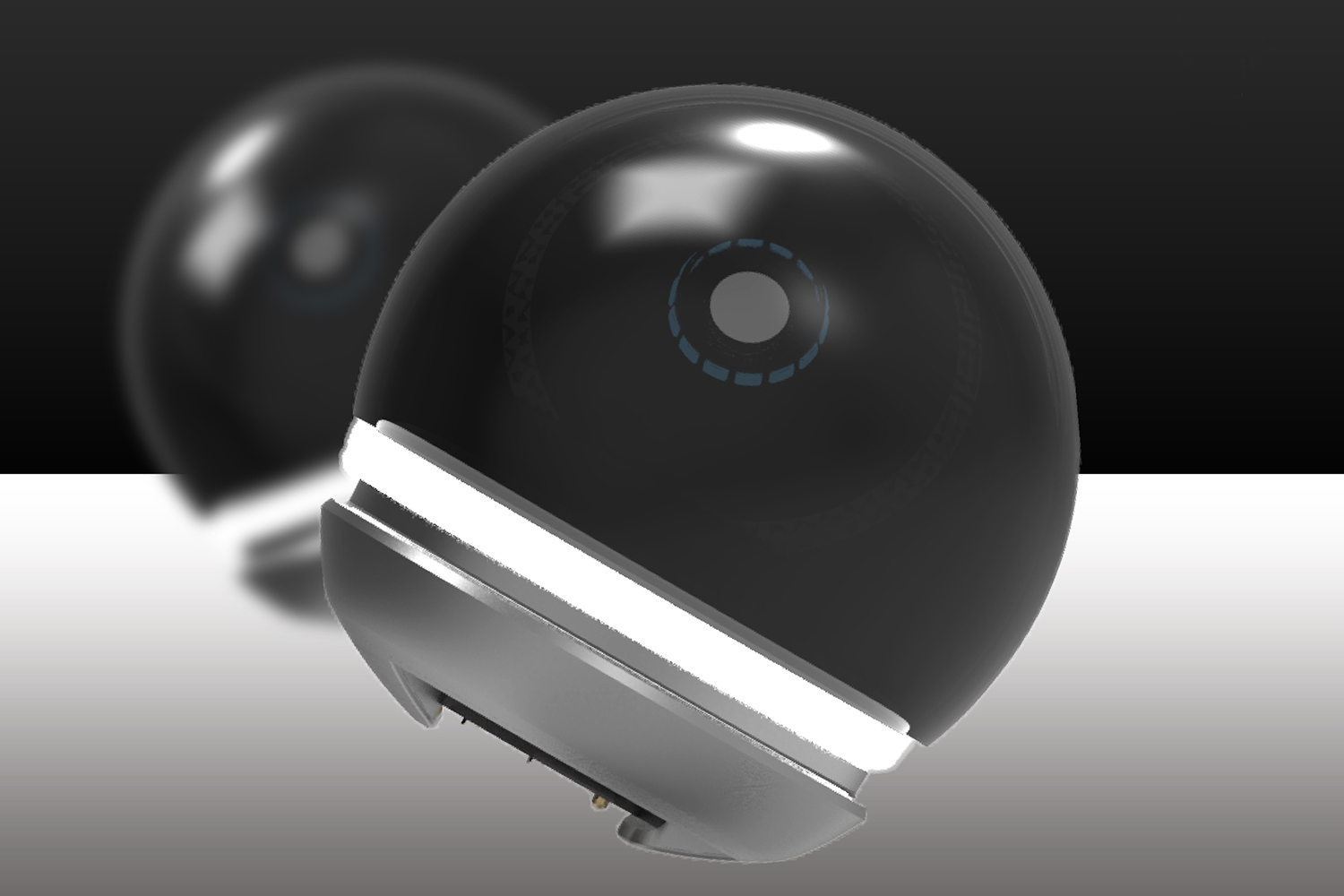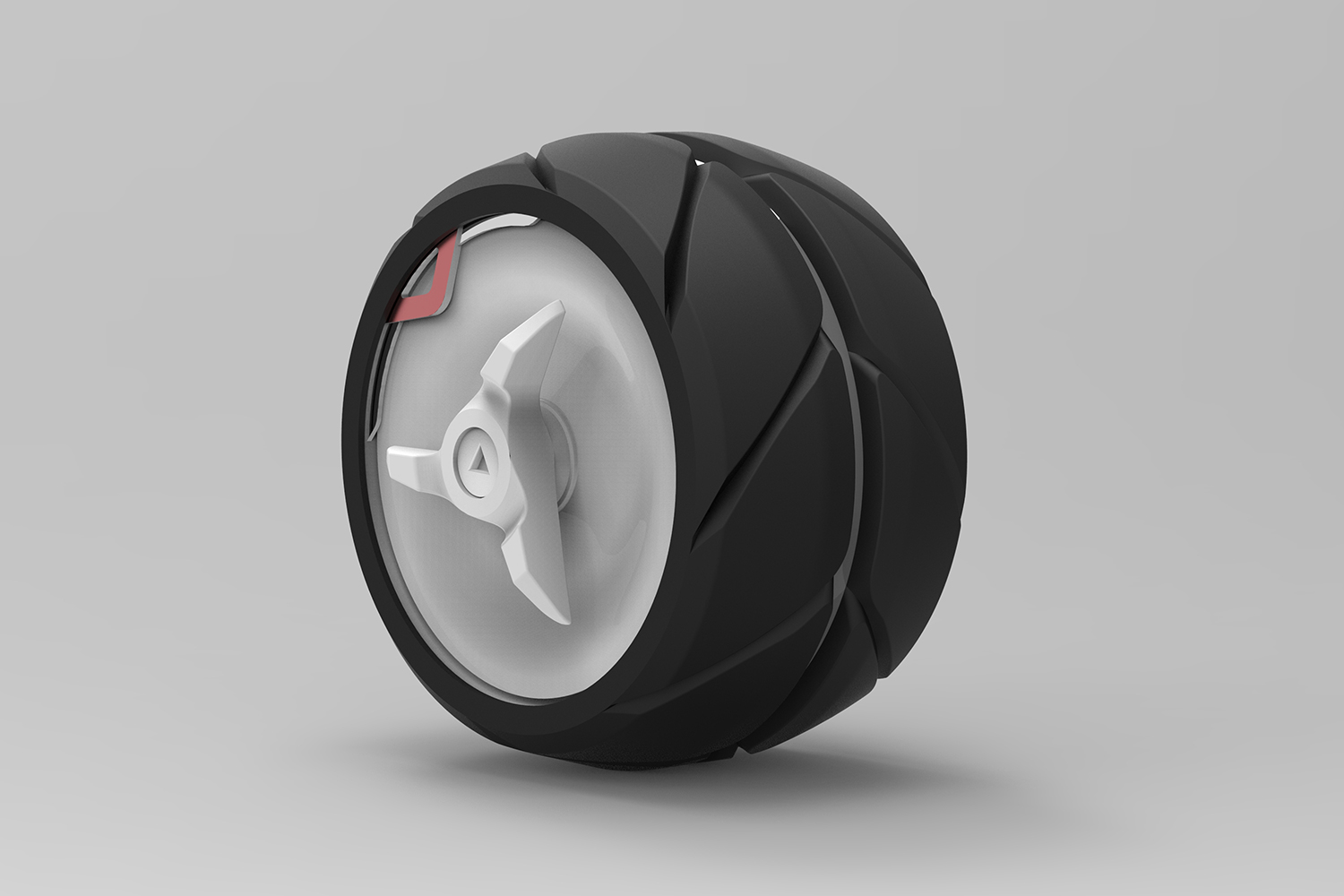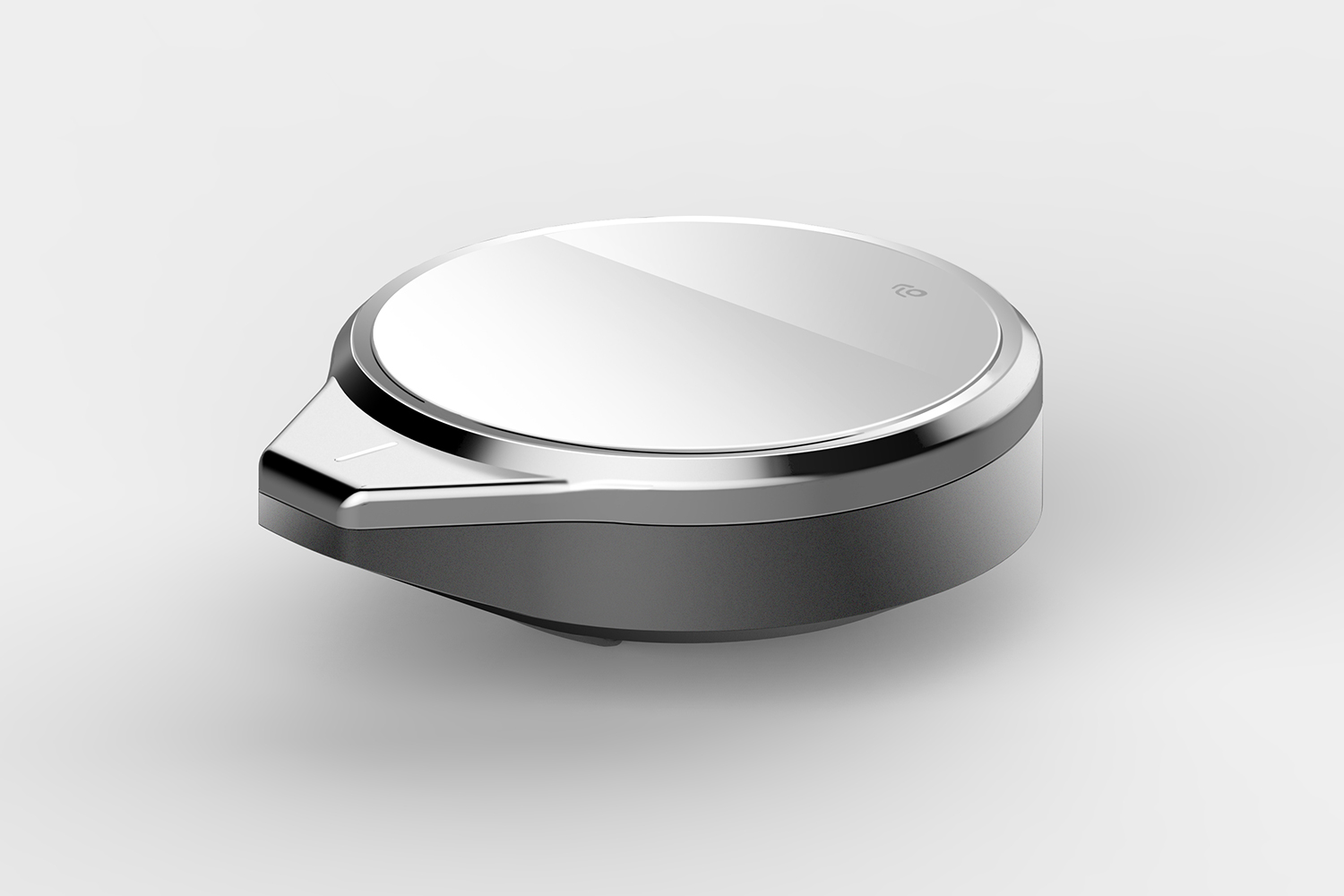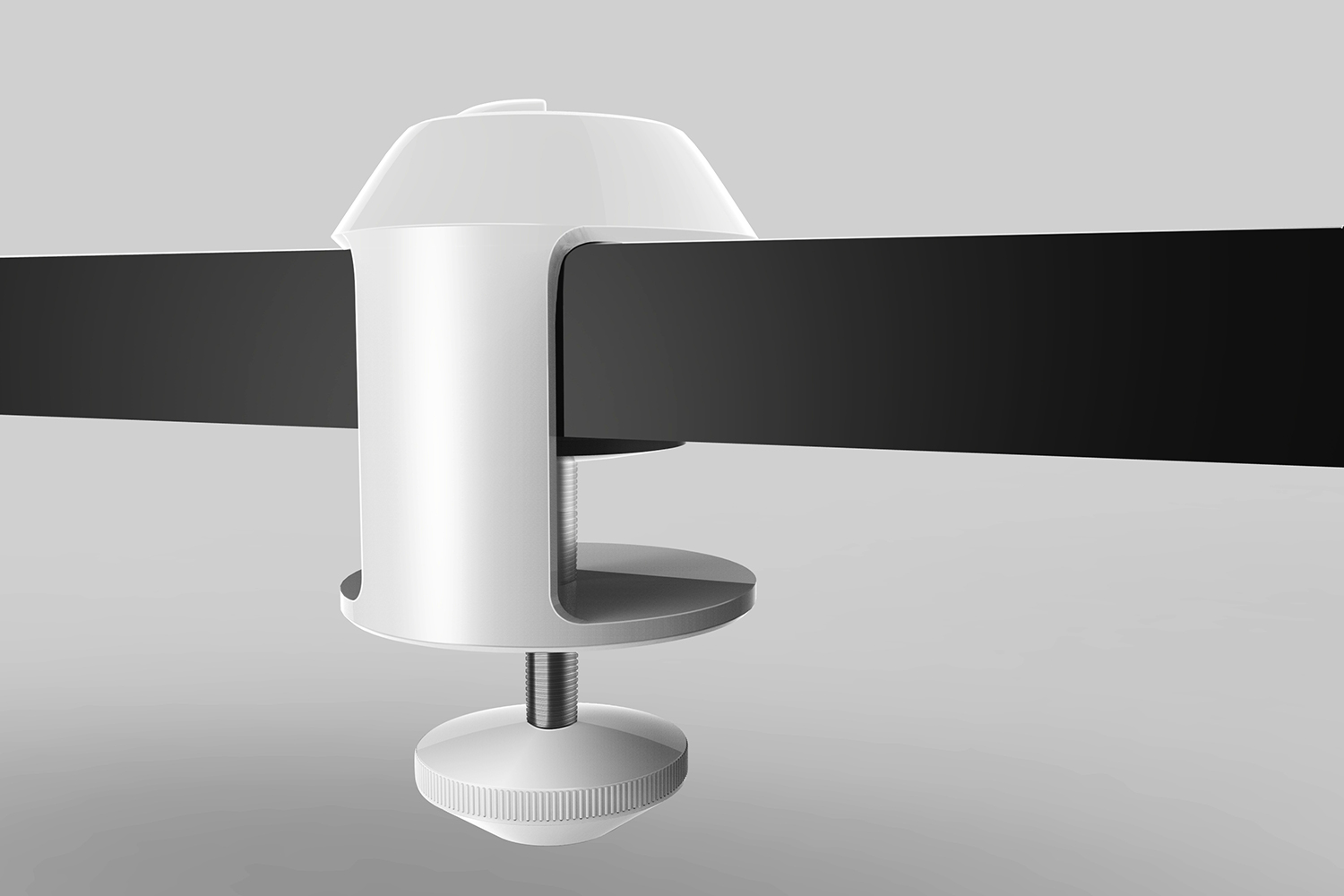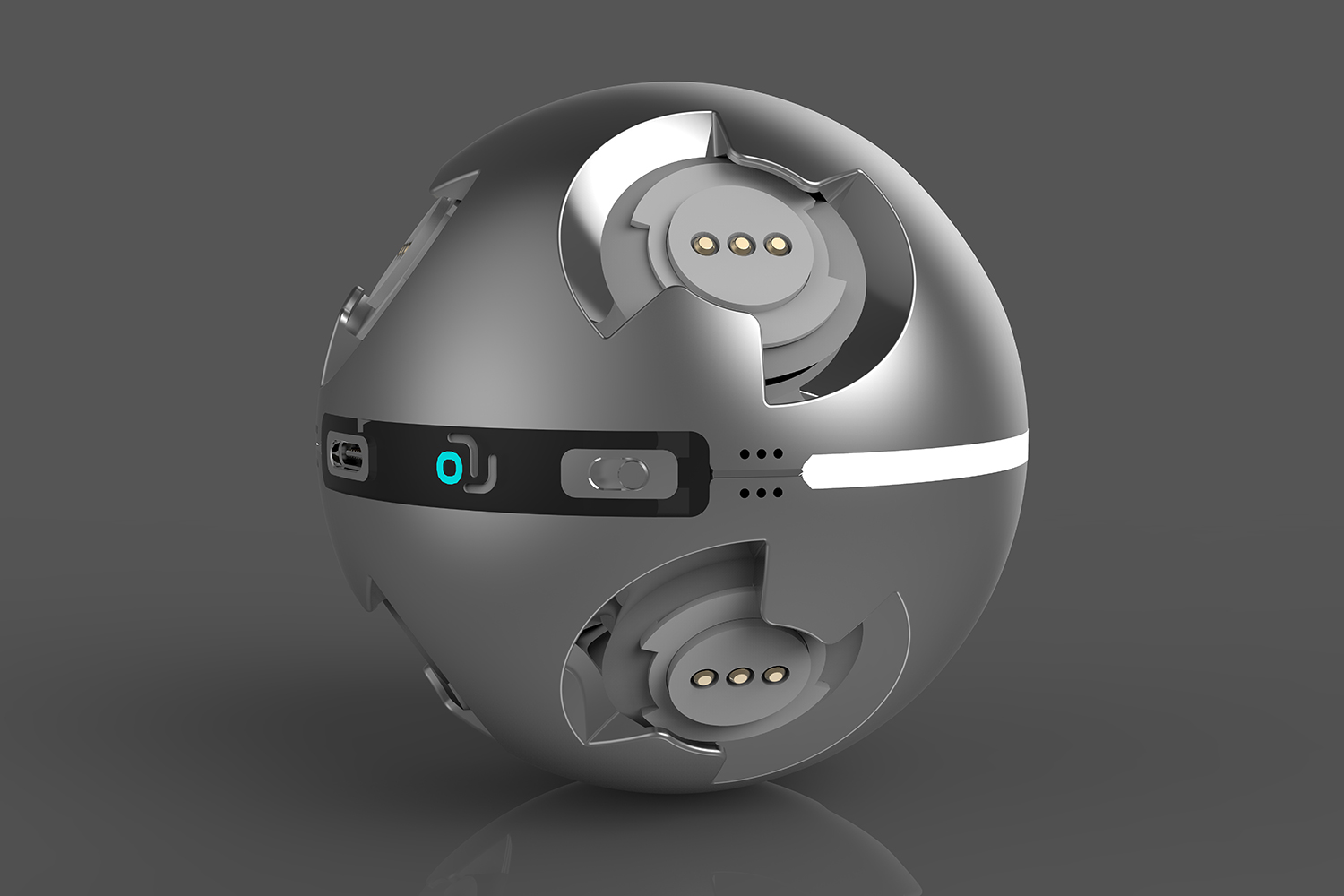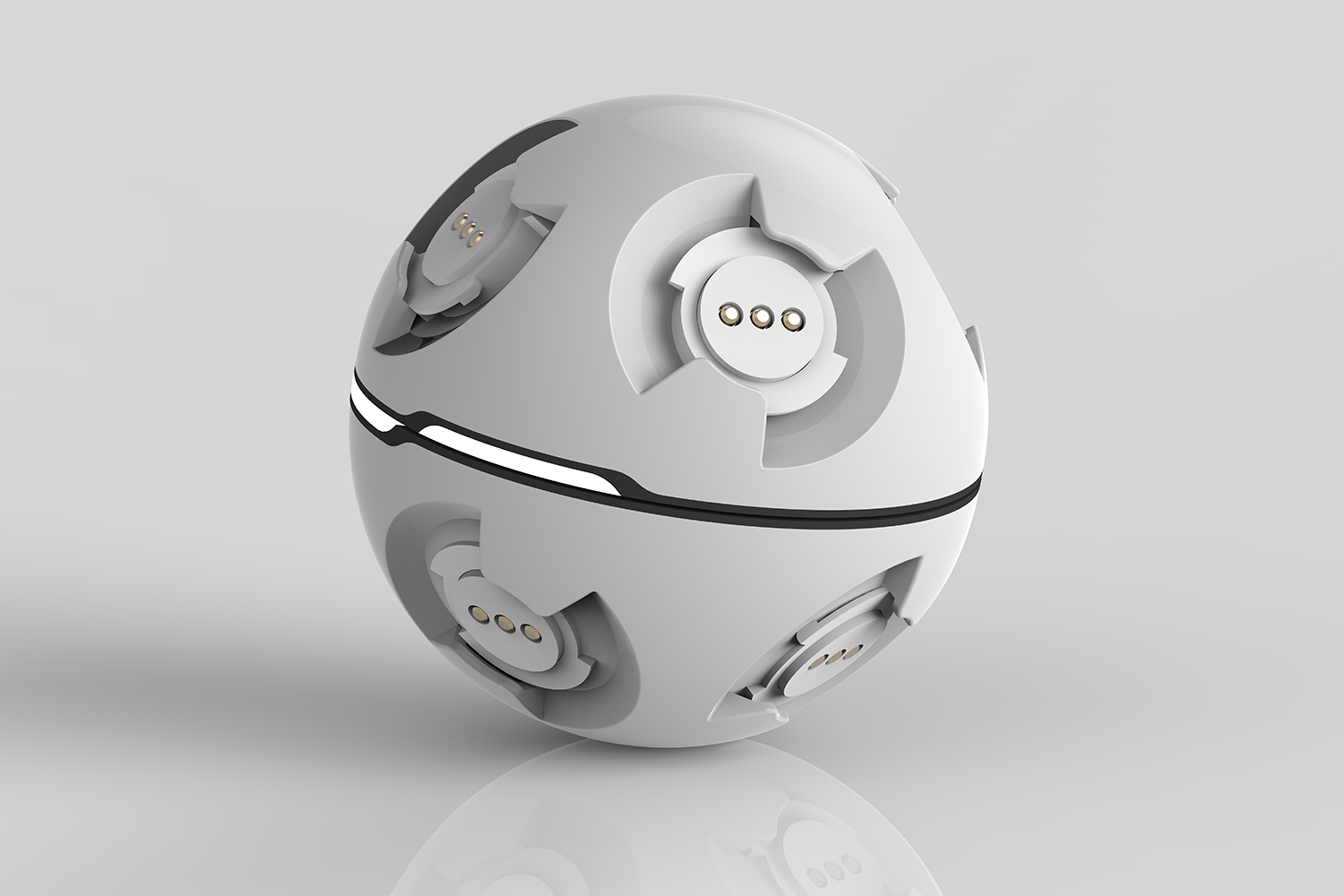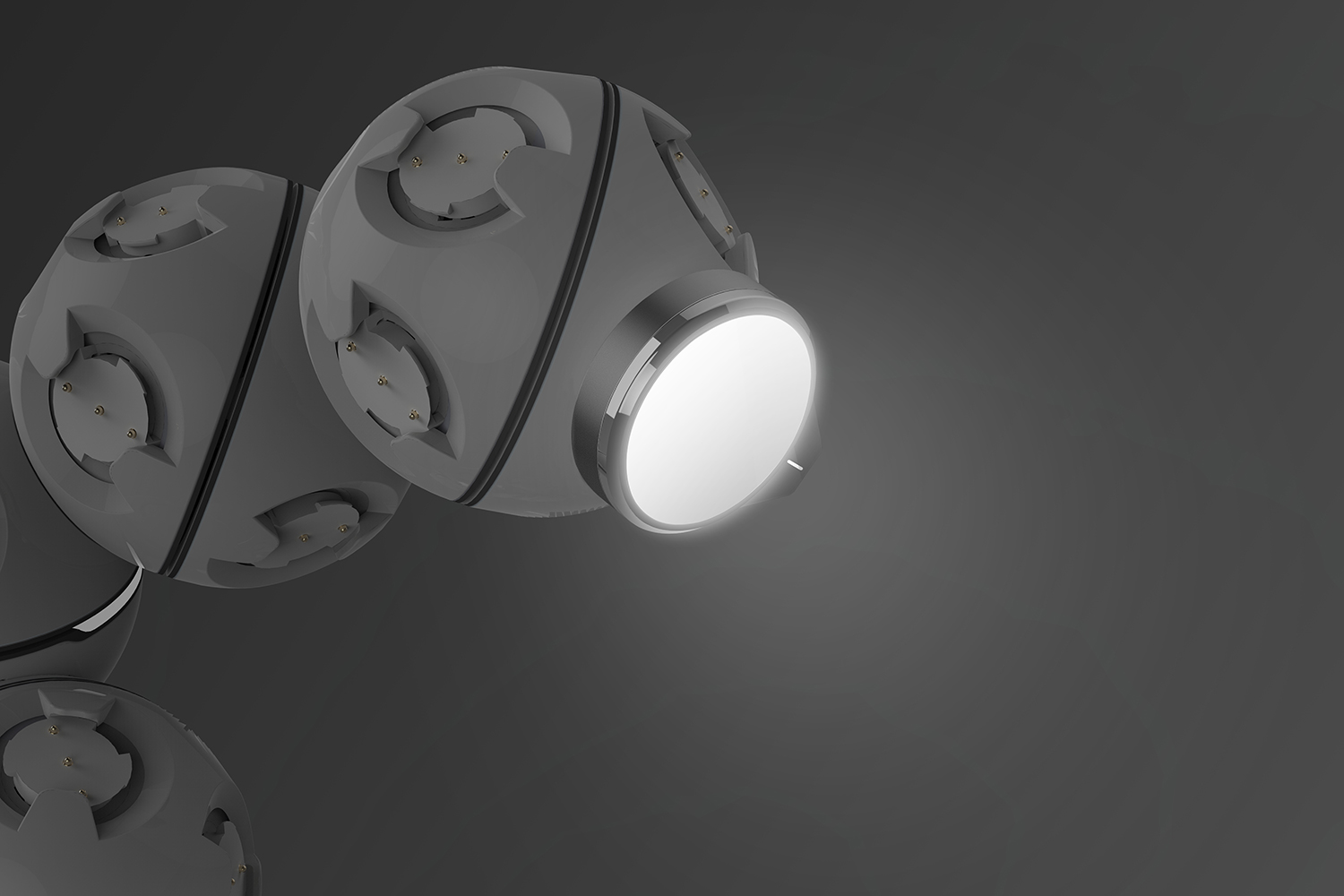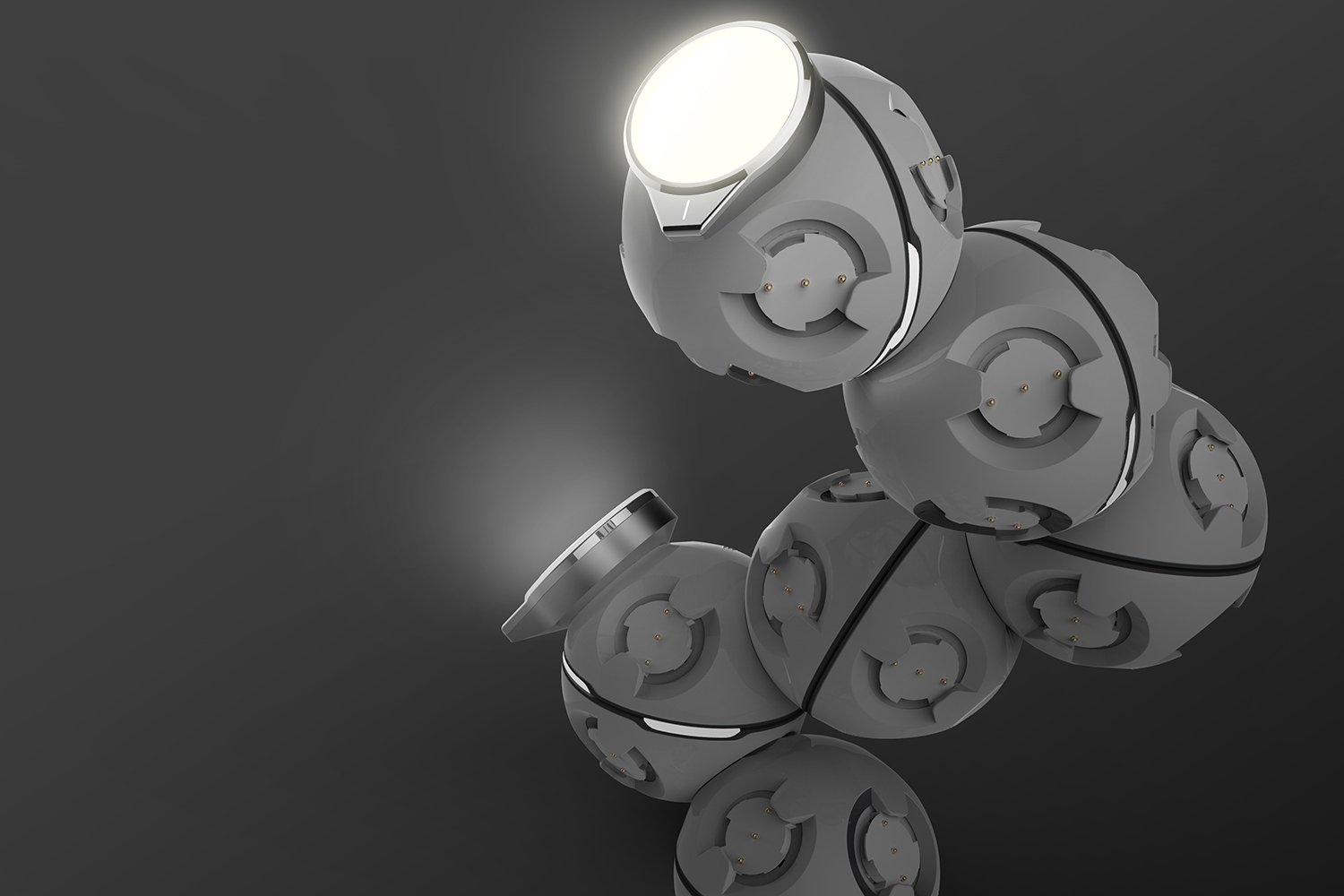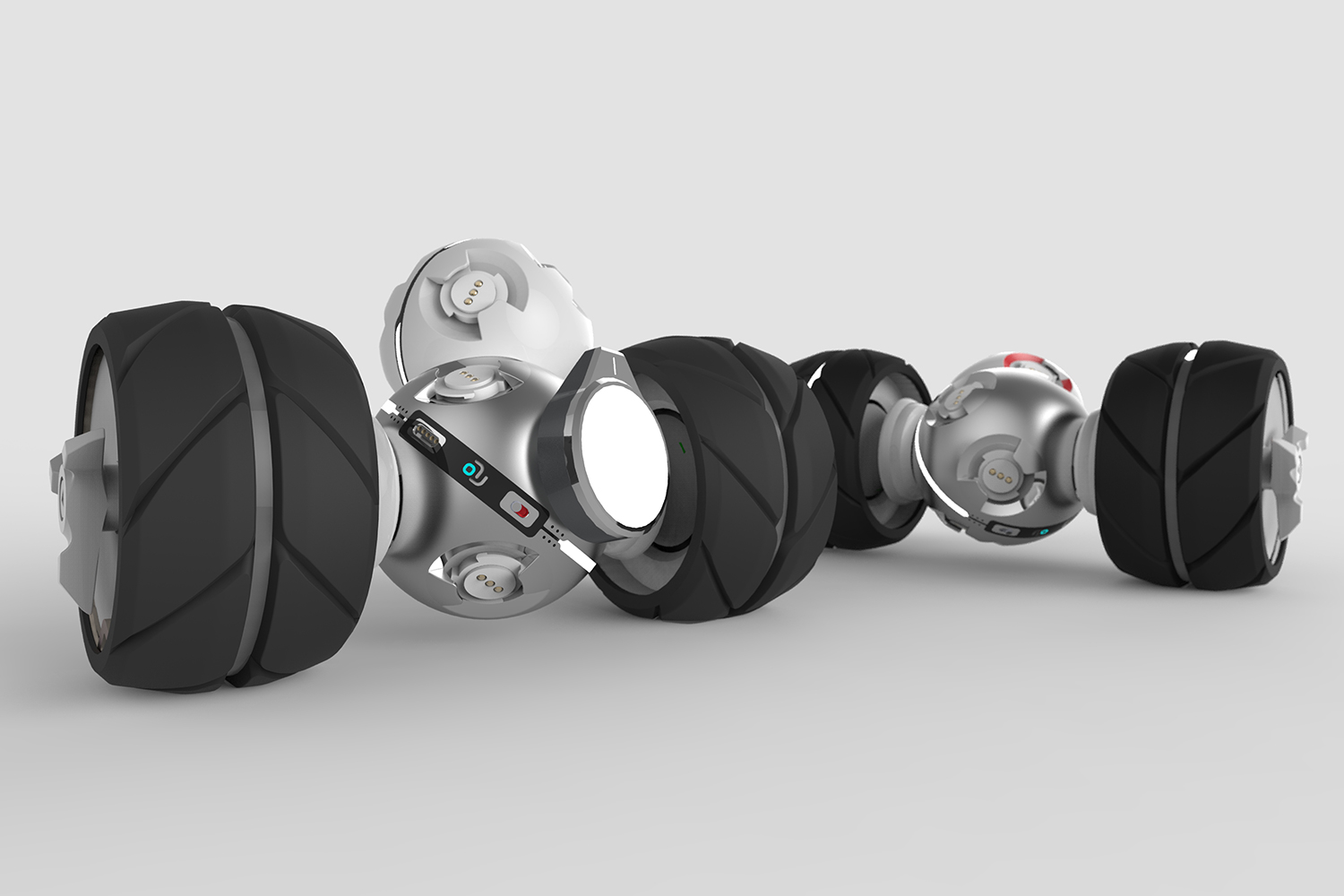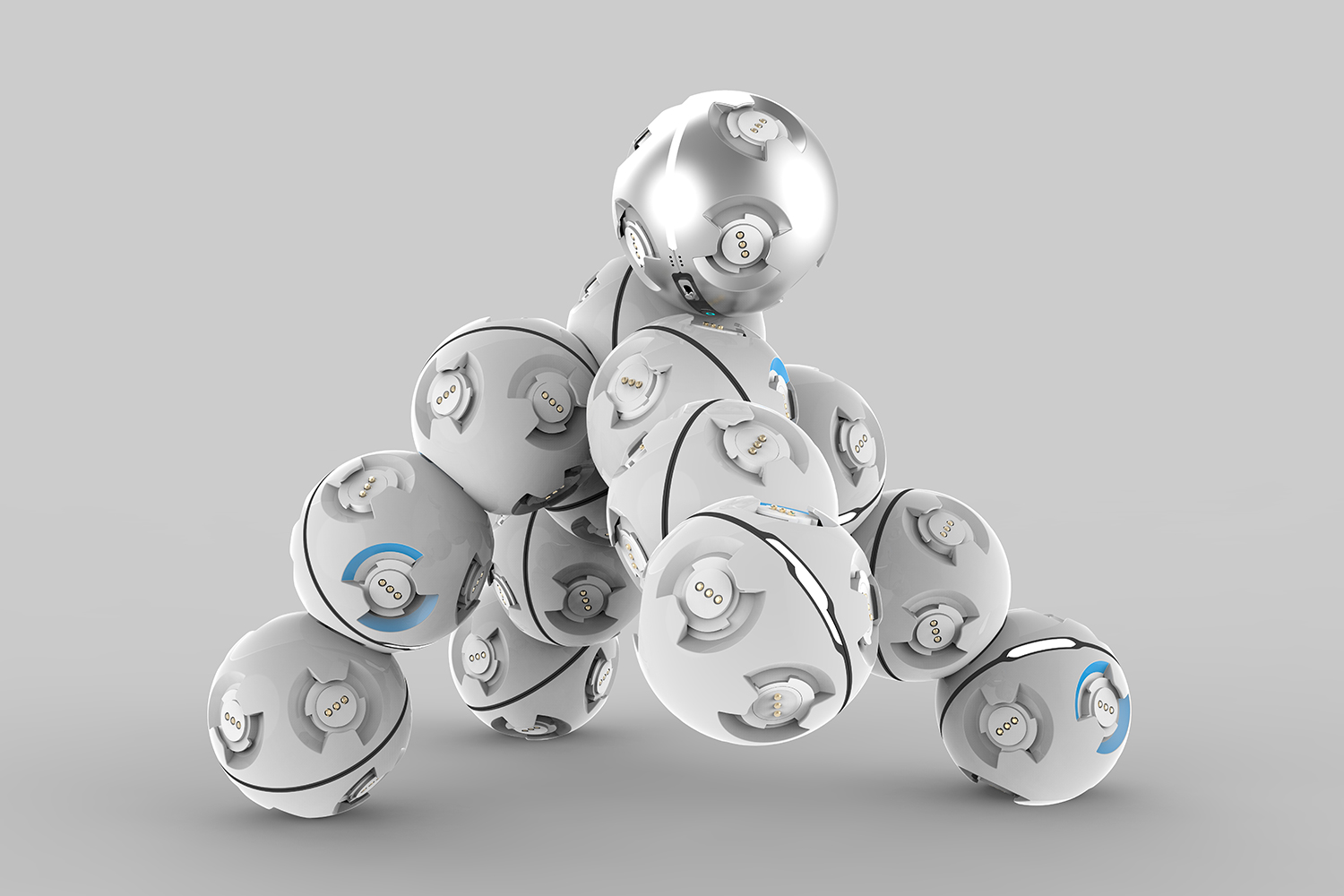What kind of robot would you build if you didn’t have to bother with soldering, chassis construction, or coding? What if you could take it apart and use the same pieces to build something else? Imagine having the versatility of Voltron without annoying little people inside. CellRobot, up on Kickstarter right now, gives you that kind of freedom (blazing sword not included).
The device is exactly what it sounds like: robotic cells that can be assembled into a wide variety of different robots. Each cell has a 360 degree angle sensor, servo motor, and microcontroller — and can connect to any other cell at practically any angle thanks to a round snap joint system.
The powerhouse of any CellRobot is the “heart” — an all-in-one power supply and communication hub. It has a charge port, tiny six-hole speaker, power indicator, a small screen, and the standard round snap-twist connectors. It also houses the Bluetooth 4.0 transceiver that connects to your cellphone, as well as Wi-Fi, and Zigbee to connect to the other cells. The 2200 mAh lithium battery will run four cells for about 30 minutes, or one cell for five hours.
For more flexibility and less wear on your standard body cells, CellRobot has x-cells — additional modules that expand the functionality of the Heart cells, such as wheels, wheels, clamps, spotlights, and even camera. Cells and their accessory parts are controlled by an app (available for iOS and Android) that creates a 3D image of your creation (or creations). The app can show you how to build and control a robot, or give you the freedom to build your own and create custom commands for it.
In “guide mode,” for example, the app will show you how to put your cells together the right way, whereas “custom mode” lets you assign any movements to the shape that you’ve assembled. No matter what mode you choose, the app offers a shape library that shows the many ways you can put cells together. It will be updated with new configurations as other CellRobot users add creations to the community collection.
Even though CellRobot is designed to be as simple as a starter kit for those just getting started with robotics, people who are already familiar with robotics will have even more flexibility. The KEYi team, the creators of CellRobot plans to open the platform to developers in 2016, at which point those with the know-how can make their own apps. Users can make and add their own x-cells to extend CellRobot’s functions. The team pitches it as “100 robots in one.”
The CellRobot team is seeking $150,000 to cover the cost of manufacturing and finishing the development of the mobile app. Backer rewards for “early birds” start at $160 and go up from there, depending on how many cells are included. The super early-bird is a one-heart/four-Cell kit for $160, while the Deluxe Early Bird comes with one heart, 12 Cells, four wheels, one camera, one spotlight, and one connector for $680. If all goes as planned, KEYi expects to begin shipping to backers as early as April 2016.
